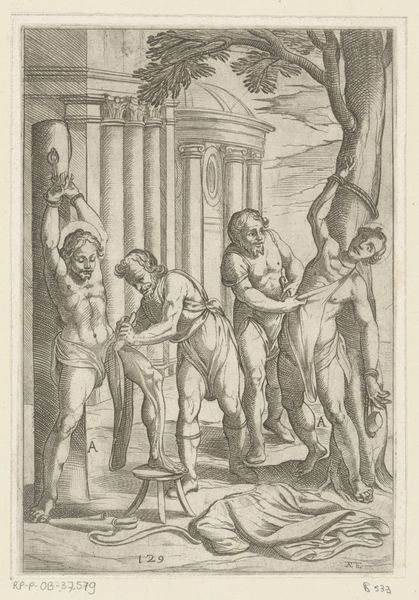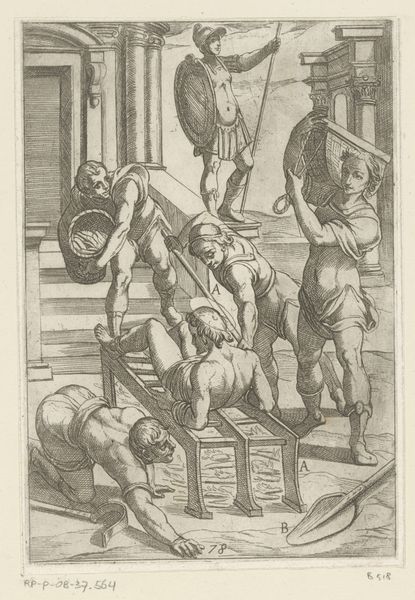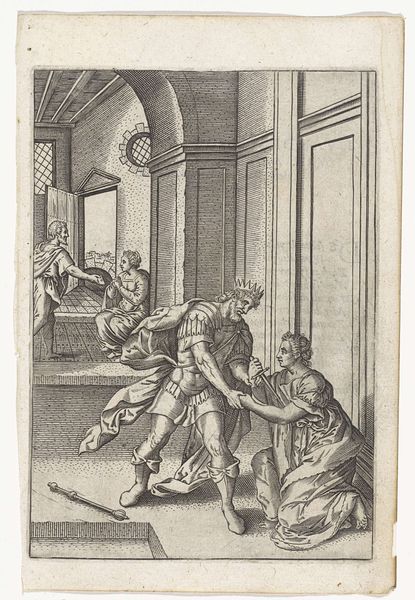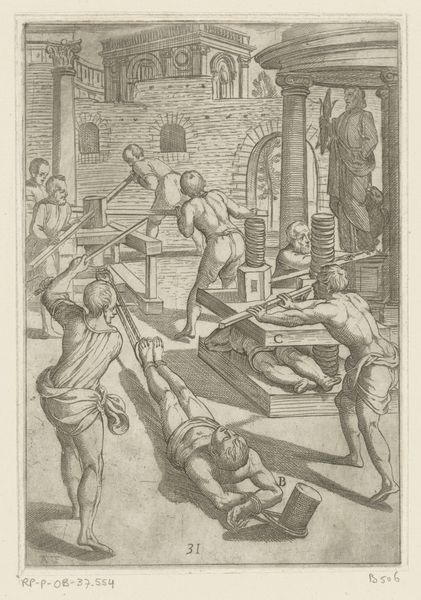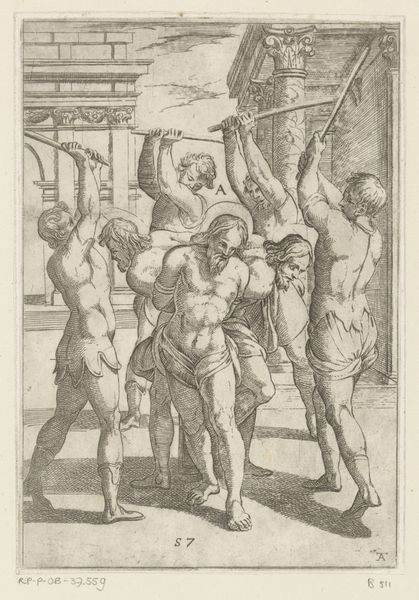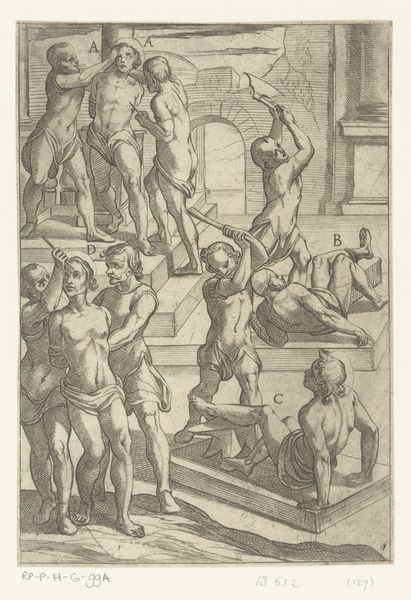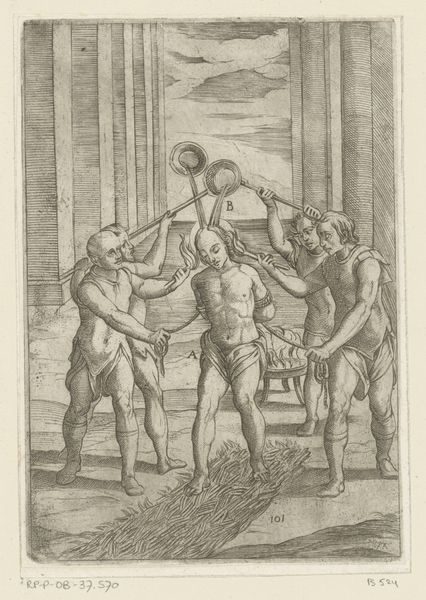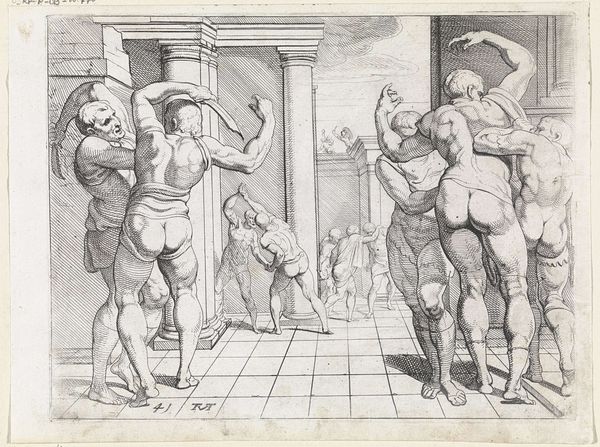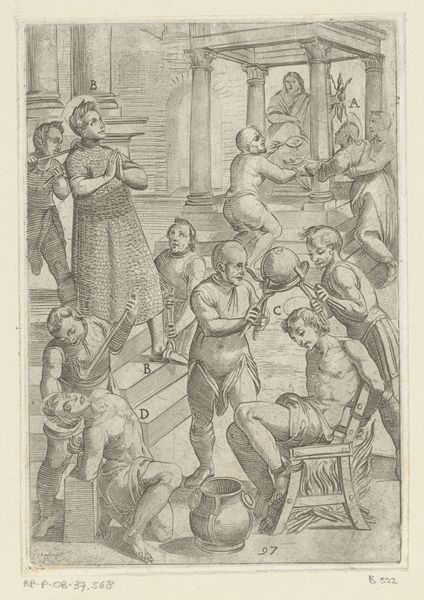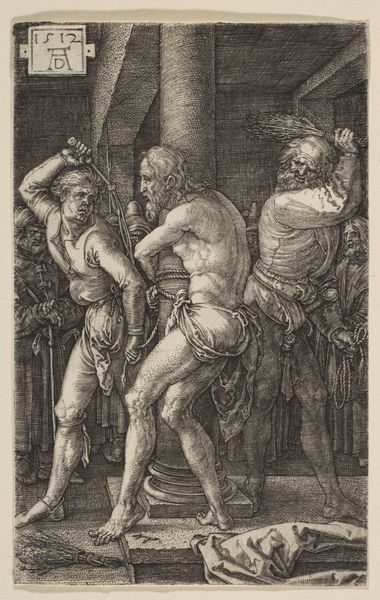
print, intaglio, engraving
#
narrative-art
#
baroque
# print
#
intaglio
#
figuration
#
history-painting
#
engraving
Dimensions: height 194 mm, width 133 mm
Copyright: Rijks Museum: Open Domain
Curator: This engraving, titled "Four Men Tugging at the Limbs of a Saint," attributed to Antonio Tempesta and dating from 1565 to 1630, depicts a brutal scene rendered with remarkable detail. It’s part of the Rijksmuseum’s collection. Editor: Brutal is right. The composition is chaotic but forceful, conveying intense pain and struggle. The way the men's muscles are rendered… it's disturbing. There's a real sense of cruelty in their poses, but it does communicate something elemental about power. Curator: Power, certainly. The dismemberment, while physically gruesome, has a longer, symbolic echo. The tearing apart of the saint is not just an act of violence; it represents the suppression of religious figures throughout history. It suggests the destruction of meaning itself. The viewer must be alert and not avert the gaze. Editor: You think so? I find myself drawn to the architectural backdrop more than the violence. The pillars and arches feel strangely indifferent to the drama unfolding. Could it represent institutional apathy in the face of cruelty, or perhaps even collaboration with it? Curator: Precisely. These architectural details reinforce the narrative of historical power structures at play. Notice how the light emphasizes certain limbs over others, a visual dance to draw the eye to where the viewer must confront how humans defile each other with religious and political justifications. It speaks to a wider human capability, perhaps a latent one. Editor: It is interesting that you make a clear separation from power structures. However, given the likely patronage for these sorts of works – or at least, the market for them – wasn't the act of depicting violence almost celebratory? Like a symbolic triumph over the 'other'? Curator: Ah, that's the fascinating duality, isn’t it? The artist may be playing to the established market demands while also imbuing the work with his own visual critiques of violence and oppression. Prints were more accessible to the wider public, unlike private collections. This allowed an audience a glimpse of realities of state-sanctioned atrocities that often go unacknowledged. It opens up conversations. Editor: A grim reflection indeed. Thank you. Curator: And to you, as well. A reminder that visual narratives possess a potency that spans centuries, capable of stirring our unease and compelling critical examination.
Comments
No comments
Be the first to comment and join the conversation on the ultimate creative platform.


